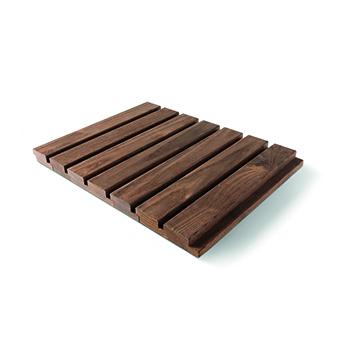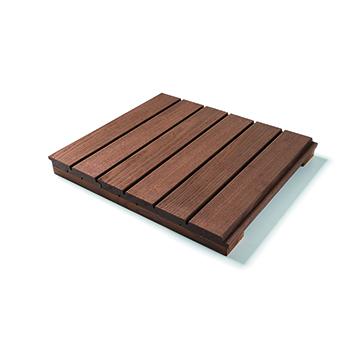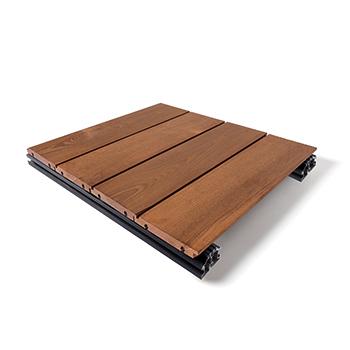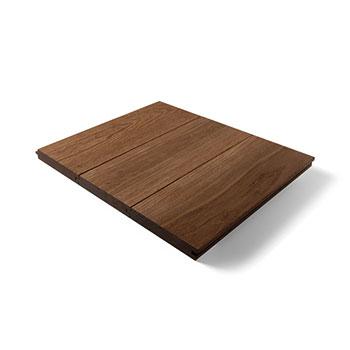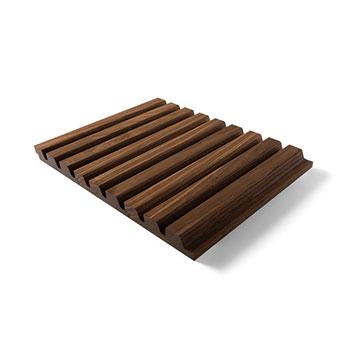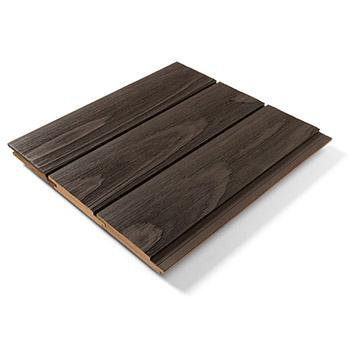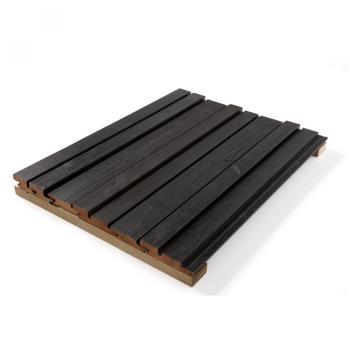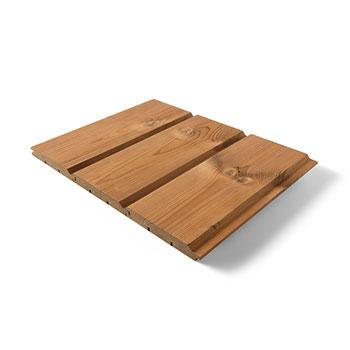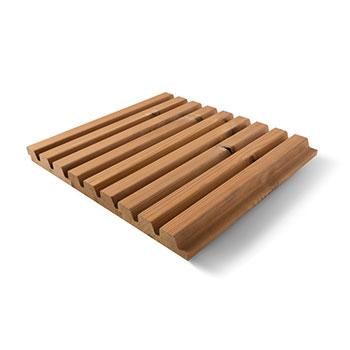Class D profiles
Show productsAt Carpentier, we offer a wide range of closed joint cladding that complies with Class D reaction to fire standards. If required, we can apply a fire-retardant treatment to these profiles so that they meet Class B reaction to fire standards.
Class D cladding
Until recently, architects, entrepreneurs and property developers could rely on the Certified Without Further Testing (CWFT) table for Class D timber cladding. All wood profiles meeting the criteria of the CWFT table (closed joint façade systems, minimum thickness of 18 mm and a density of at least 390 kg/m³) could be used as cladding without tests or a classification report. However, the European Commission clarified their position, stipulating that the CWFT table only applies to "untreated" wood. This is to eliminate any risk of misinterpretation, which regularly occurred in practice.
Our HOTwood cladding falls under the category of “treated” wood. In accordance with the new regulations, which came into effect on August 20, 2024, it has to be tested to determine whether it meets Class D reaction to fire standards. So, for “treated” wood, you can no longer use the CWFT table as a guide.
Class D reaction to fire guaranteed by reports
Our HOTwood wood profiles that meet the new conditions have undergone the necessary tests. So not only can we guarantee that these cladding profiles are indeed Class D reaction to fire. Our profiles are, therefore, a safe and reliable choice for a variety of construction projects. The reaction to fire classification reports are available online and can be easily downloaded using your personal login.
Improving the reaction to fire class using autoclave
Does your project require cladding that meets Class B reaction to fire standards? No problem! Our Class D cladding can undergo fire-retardant treatment to achieve a Class B reaction to fire rating. This treatment is carried out under vacuum conditions in an autoclave, using an environmentally-friendly fire-retardant product. After treatment, we can finish the cladding with a colour or give it a pre-weathered look, designed to match your project.
Furthermore, did you know that our range also includes Class B reaction to fire cladding profiles that do not need fire-retardant treatment?
